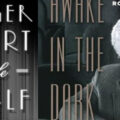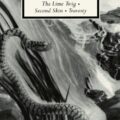Sex & Lies in Vintage Hollywood: Chuck Palahniuk‘s Tell-All
Told from the perspective of a surly, intelligent assistant-to-a-star Miss Hazie Coogan, Tell-All is a delicious slap in the face of an archetypal Hollywood of yesteryear. Like his previous novel Snuff, which leveraged the ludicrous and obscene to criticize porn culture, Tell-All traffics in the over-the-top and the absurd. Protagonists Katherine Kenton (“one photo of her arriving at an awards dinner or premiere was enough to put most animals onto the endangered species list”) and Webster Carlton Westward III (“the American specimen with bright brown root-beer eyes”) are manipulated to feats of mawkishness and profanity unparalleled even in any modern-day reality TV show. At the heart of Hollywood’s golden age, Palahniuk casts a deliberately surreal spell over his readers—though, at times, the kitsch, the crass, and the cliché threaten the integrity and authenticity of the novel itself.
Palahniuk’s descriptions are rich, sometimes almost too rich to follow, and his humor original, if repetitive. For instance, the fabulously famous celebrities that populate his literary experiment are marched onto the page in bold—a technique that is at first amusing, then admittedly exhausting, and continues until the last page. When the real world takes second stage to the stage itself, anything seems possible, and everything laughable:
Miss Kathie raises the American flag on Iwo Jima, assisted by Jack Webb and Akim Tamiroff. A Florenz Ziegfeld chorus line of Mack Sennett beauties gotten up as imperial Japanese airmen in low-cut, peekaboo costumes by Edith Head link arms and execute precision high kicks which expose their fascist buttocks.
If you’re willing to read between the lines of gushing description, mockery and forest-dense bolded nouns, Palahniuk has embedded a brilliant critique of hollywood culture and celebrity obsession into the novel. On-stage and in-script depictions of the saccharine Katherine Kenton are cleanly juxtaposed with a pathetic private life riddled with substance abuse, exploitation, and insecurity: “‘Realistically, what would a lovely young man like Webb want with an old woman?’ Smiling at the crushed orchids in her lap, she says, ‘How could I be such a fool?’ She’s no fool, I assure her. She’s Anne Boleyn and Marie Curie.” While not entirely subtle, his tongue-in-cheek depictions of idealized femininity provide a cultural commentary that is incisive and damning.
Feminist though he may be, Palahniuk’s female narrator is underdeveloped, and his own descriptions of feminine motives are somewhat unbelievable: the ugly girl’s envy, the addiction to a masculine savior, female manipulation and helplessness, are all tired themes, and Palahniuk fails to provide a viable counterpart to these leitmotifs. Hardly D.H. Lawrence, Palahniuk traces the main motivation of his more intelligent female narrator to envy and maternal manipulation, while his protagonist remains vapid and pathetic. Likewise, his choices of symbol and allegory are often jejune, and even stolen outright—such as his choice of a Dorian Gray mirror to depict the sins and sadnesses of Katherine’s sordid past.
Though Tell-All’s devices may very well be mere shallow distractions from a lack of mature characterization, flowers of interest stand out from the glitz, lending the novel a semblance of deeper purpose. Miss Hazie’s self-reflections come as a welcome relief from the noisy barrage of name-dropping, lurid details, stolen symbols and witticisms that clutter up the pages: “in truth” the narrator muses “the degree of anyone’s success depends on how often they can say the word yesand hear the word no.” Often Miss Hazie’s achingly self-aware and deliberate self-proclaimed personality creates a sharp and telling contrast to Katherine’s aloof and needy nature. This contrast provides a certain level of intrigue, even if the characters themselves seem eerily absent.
Another such flowering insight emerges from the clever interplay between biography, film, and history. In choosing an unreliable narrator, Palahniuk provokes reflections on the text itself, and “the rest of this silly motion picture we call human history.” Palahniuk contrasts history, herstory, and hollywood renditions of the same, highlighting the inevitability of myth-making.
The themes of immortality, critical awareness, cultural value, and historical import are significant contributions to the novel. Bizarre suggestions of death are inter-spliced with scenes of disturbing beauty rituals and casting calls for unwanted babies. Katherine visits a make-shift tomb to visit her dead puppies and “was-bands”: “The engraved names Sweetie Pie and Honey Bun and Oliver ‘Red’ Drake, Esq., what Hedda Hopper would call ‘dust buddies.’ Her beagle, her Chihuahua, her fourth husband—the majority stockholder and chairman of the board for International Steel Manufacturing.” These creepy vestibules of her past successfully haunt the fringes of the unfolding story, and surface poignantly at inopportune moments.
What might be critically said of Tell-All has already been noted in the criticism of Palahniuk’s other works. Take The Guardian’s review of Rant: “At first you think this is the best cake you’ve ever eaten, you never want to stop eating it; then you’ve eaten too much and you never want to taste it again.” Or consider The Independent’s review of Snuff: “Palahniuk … writes wild amphetamine-novels. You swallow them and experience a strange and delirious high. Then you hit the last page, come down, and wonder who the hell you’ve been hugging.” Like these other works, Tell-All is a pleasurable experience, and what it lacks in friction or depth it makes up for in cynicism and sin.





